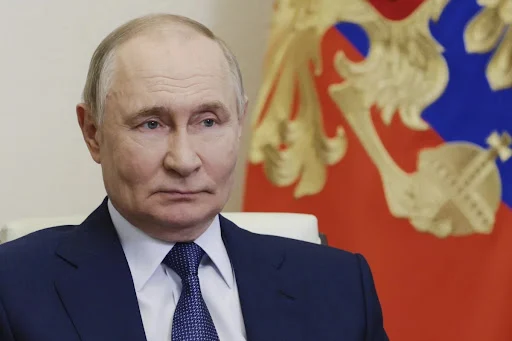By Ephraim Agbo
Last night wasn’t just another air raid in Ukraine. It was something far bigger.
If you’re wondering just how bad things got in Kyiv, let’s put it plainly: Russia launched what Ukrainian officials are calling the biggest drone and missile attack since the war began in 2022.
It wasn’t a few drones here and there. We’re talking 539+ Shahed drones and 11 ballistic missiles, fired at the capital in the dead of night. Seven relentless hours of buzzing, blasts, air raid sirens, fires, and fear.
Let’s unpack what really happened.
🕛 A Night Like No Other
The attack started late on July 3 and dragged into the early hours of July 4. According to Ukraine’s Air Force, the skies over Kyiv were flooded with drones—mostly Iranian-made Shahed kamikaze drones—and ballistic missiles.
And while Ukraine’s air defense did a heroic job intercepting many of them, not all were stopped.
Explosions rocked several districts. Fires broke out. Glass shattered. And once again, ordinary Ukrainians had to take cover underground while war machines lit up the sky.
💥 The Human Cost
When the smoke cleared, at least:
- 1 person had been killed
- 23–26 people injured, with 14 in hospital
- Fires had erupted in six districts
- A school, a clinic, an apartment block, and railway infrastructure were among the targets hit
Mayor Vitaliy Klitschko sounded the alarm on toxic fumes from the drone explosions. He urged residents to keep their windows shut and avoid going outside unnecessarily.
Can you imagine having to worry about breathing your own city’s air just because your government is at war?
🧩 Why Now? Timing Raises Eyebrows
Here’s where things get even more suspicious. Just hours before the attack, Russian President Vladimir Putin had a phone call with Donald Trump.
We don’t know exactly what they talked about, but the timing couldn’t be more… well, convenient for the Kremlin.
Ukrainian officials were quick to call it a “cynical act of terrorism.” Some analysts say it was a power play—a brutal way for Russia to remind the world that they’re not backing down.
Could this be Putin’s way of testing the waters with the new White House? Maybe. Could it be him signaling to NATO that he’s still got plenty of firepower and no fear of using it? Very likely.
📍 Why Kyiv Again?
Kyiv has been a prime target since day one. In the early days, Russia tried to take the city by land. That failed. So now, the skies have become the battleground.
This isn’t the first large-scale air attack recently:
- On June 17, Russia fired 400+ drones and missiles, killing 28 people.
- On June 23, a similar barrage left 10 people dead.
But this one? This one topped them all.
And while Ukraine’s defenses are better than they were two years ago, they’re still not invincible. Hundreds of projectiles flying in at once are hard to stop, no matter how advanced your gear is.
🌍 How the World Is Reacting
So far, there’s been:
- Strong condemnation from EU and NATO leaders
- Calls for more advanced air defense systems to be delivered to Ukraine ASAP
- Warnings from the UN about the humanitarian impact
But the big question is: will this actually change anything?
Because if history has shown us anything, outrage doesn’t always translate to action.
🧭 What This Means Moving Forward
This wasn’t just about Kyiv. It was a message—to Ukraine, to NATO, to Washington.
It said: “We’re still here. And we can still do this whenever we want.”
Ukraine, meanwhile, is trying to carry on. Emergency workers are out clearing debris. Hospitals are treating the injured. People are back on their feet. But you can’t ignore the emotional weight of living through something like this—again and again.
And let’s not forget: this could happen again tonight. Or next week. Or next month.
Until there’s a real and lasting solution, the skies over Kyiv remain dangerously uncertain.












No comments:
Post a Comment